First, let's talk Lilies. The Lily family, Liliaceae, is probably the most loved of flower families. It contains amazing beauties, including the true Lilium Lilies (e.g., Tiger Lilies), Tulipa Tulips, Fritillaria Lilies (e.g., Mission Bells), and the incredible Calochortus Lilies (e.g., Mariposa Lilies). At least it does right now. Genetic testing is turning the old classification system on its ear, and many genera & species in the catch-all Lily family are being moved to other families & orders.
For me, the Calochortus Lilies are the most spectacular. Since "Calochortus" means "beautiful grass" in Latin, I'm guessing that others had similar thoughts about their loveliness. Overall, there's 70 species of Calochortus in the world, and all are found in North America - from BC to Baja. In fact, 28 species of Calochortus are endemic to California - meaning they originated and are only found here, and no where else. And boy are we glad to have them. :)
Up in the western Sierra Nevada foothills, around our family lodge near Yosemite & Mariposa, the Mariposa Lilies are the Calochortus that really catch the eye. In white, pink, red, purple and yellow, their bright faces show a uniqueness in shape, color & markings that gives each a personality of its own. One of my flickr friends elegantly summed it up: "they're like fingerprints."
Some readers are now wondering "is there a tie between the town & county named Mariposa and the lilies of the same name?" Kinda, but not really. "Mariposa" means "butterfly" in Spanish, and was the root for each name. Mariposa County was named for Mariposa Creek, a creek named by the Spanish for the Monarch butterflies that used to gather there in huge numbers during their migrations. The Mariposa Lilies, on the other hand, were so named by the Spanish because their petal shapes and markings reminded them of butterflies.
But enough words - time for beauty. Here's a smattering of shots of the Calochortus that grow around our retreat. Check out the variation within each species - how many other flowers have you seen that differ this much from bloom to bloom? You'll also notice that Mariposas are popular with the bug crowd - seems like most have some sort of insect in them collecting pollen, or lying in wait for a pollinator to come to "dinner"...
Butterfly Mariposa Lilies, Calochortus venustus:
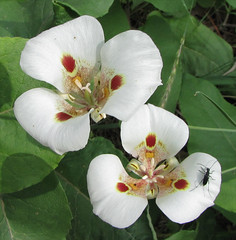
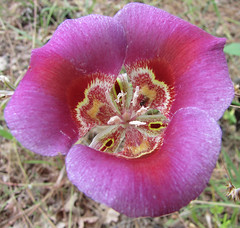
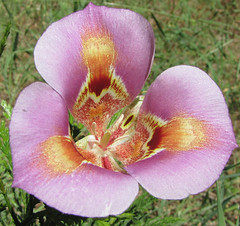
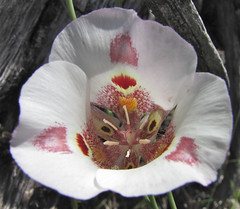
Superb Mariposa Lilies, Calochortus superbus:
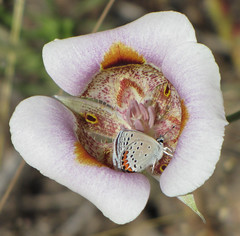

Yellow Superb Mariposa Lilies, Calochortus superbus (including a mutant with 4 petals):
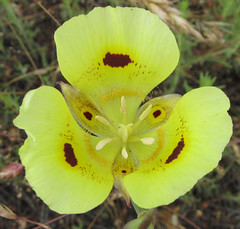
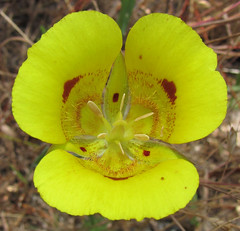
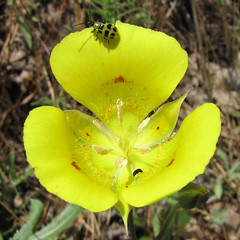
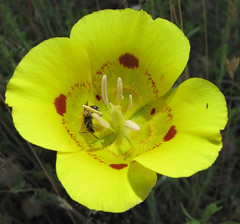
We also have Brodiaea, Triteleia & Dichelostemma lilies here 'n there. During late Spring, the Harvest Brodiaea, Brodiaea elegans, with their bright purple crowns, really stand out:
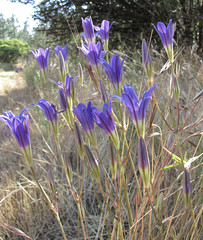

And the Twining Snakelilies, Dichelostemma volubile, grab on to anything and everything they can to work their way towards the Sun:
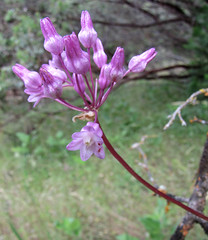
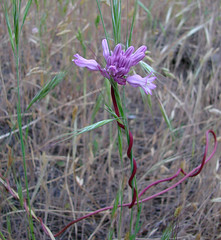
I'll close out the lilies of late Spring with this wild & weird one - Soap Plant, Chlorogalum pomeridianum, also called Amole and Soap Root. It's a towering lily with a stalk covered in white flowers that open in the late afternoon, to be pollinated by moths and night-flying insects (and was also eaten and used for soap and fish killing by the Miwok):

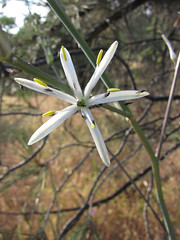
Now that we're past my unconditional lily love, here's the rest of the great late-Spring wildflowers we see in our slice of the Sierra Nevada...
St. John's Wort, Hypericum formosum, & non-native Klamath Weed, Hypericum perforatum:
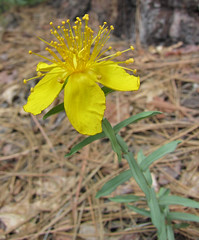
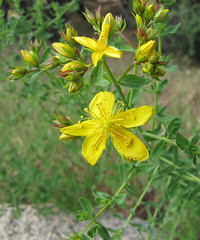
Purple Milkweed, Asclepias purpurascens, & El Dorado Larkspur, Delphinium hansenii:
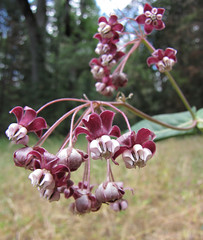
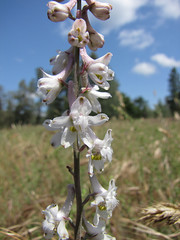
Purple Chinese Houses, Collinsia heterophylla, & Sticky Chinese Houses, Collinsia tincturia:
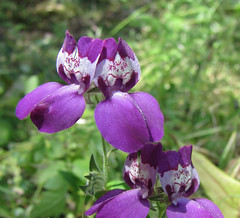
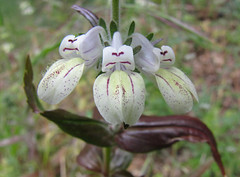
Grand Collomia, Collomia grandiflora, and a Woolly Sunflower of some kind, Eriophyllum sp.:
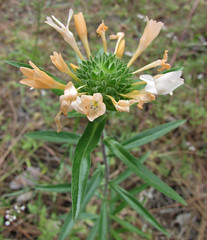
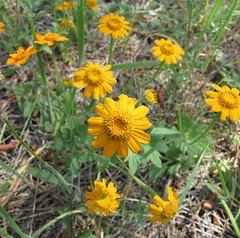
Catchfly, Silene lemmonii, & non-native Windmill Pink, Silene gallica:
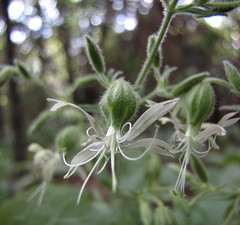
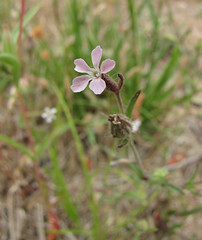
Downy Pincushion Plant, Navarretia pubescens, & Pincushion Plant, Navarretia intertexta:
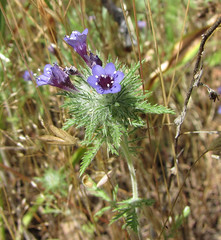
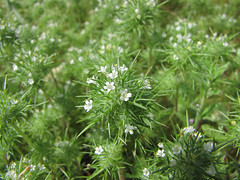
Bird's Eye Gilia, Gilia tricolor, & Sticky Sand Spurry, Spergularia macrotheca:
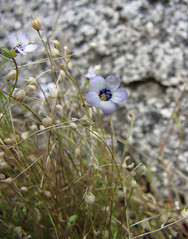
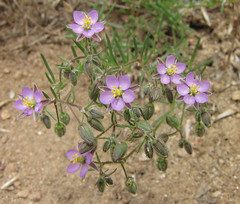
And finally, a couple of Clarkias - Winecup Clarkia, Clarkia purpuria, and Farewell-to-Spring, Clarkia dudleyana. Several of the ~40 species of Clarkia carry the name "Farewell-to-Spring," while some are also called "Herald-of-Summer" - I guess the name you choose to use depends on which of the two seasons you prefer. :)
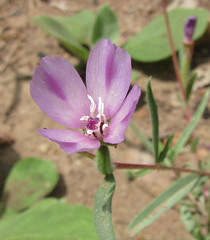

Not a bad bunch of beauties. Wonder what we'll see this Summer?
====
References:
- Calflora.org - Calflora
- Wikipedia - Liliaceae
- Wikipedia - Lilium
- Wikipedia - Fritillaria
- Wikipedia - Calochortus
- Wikipedia - Chlorogalum pomeridianum
- Wikipedia - Clarkia
- Wikipedia - Mariposa County, California

A good read again!
ReplyDelete